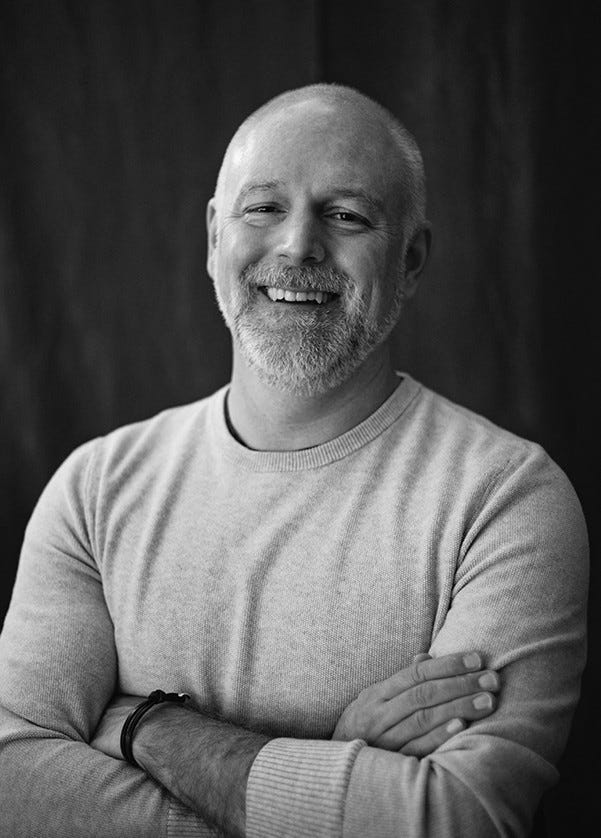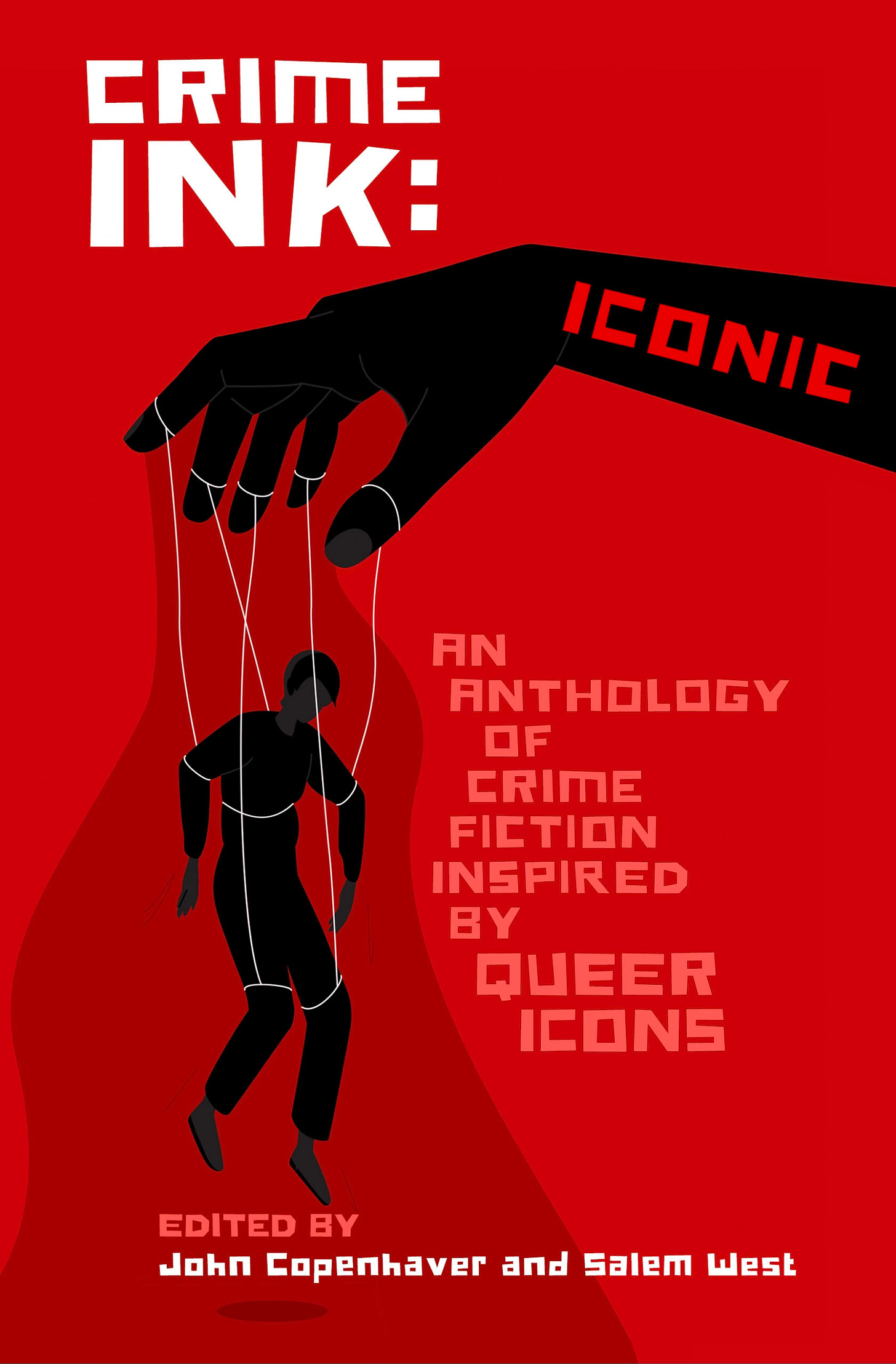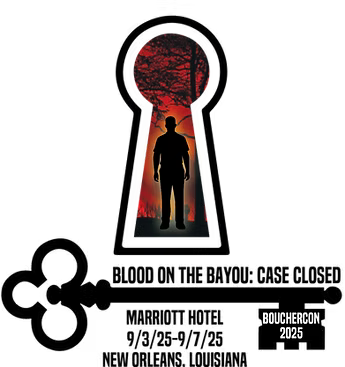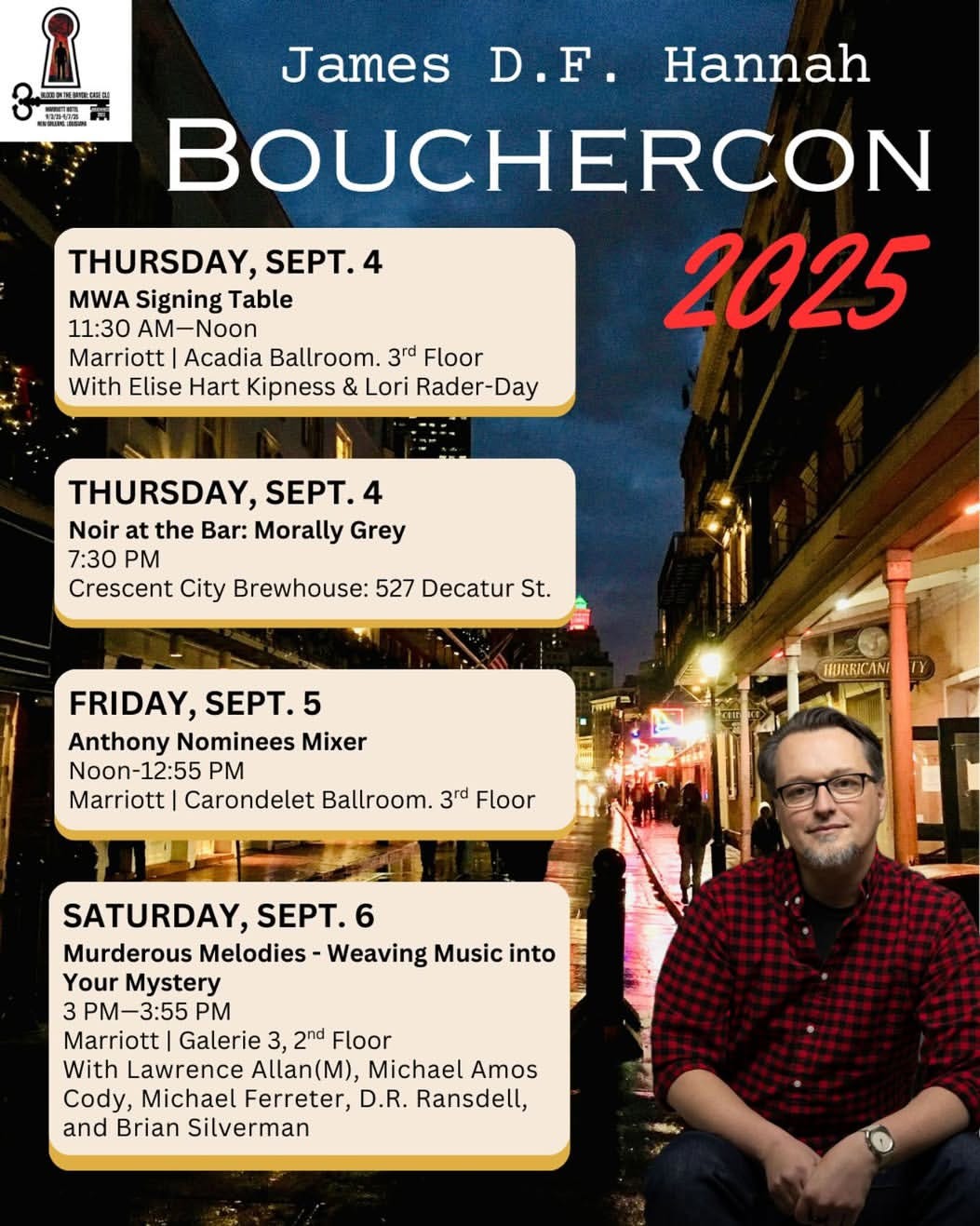#41: Five for Them, One for Me, with John Copenhaver
The anthology CRIME INK: ICONIC, co-edited with Salem West, is out September 2. It's available for pre-order now.
In the course of three novels to date, John Copenhaver has established himself as one of the most masterful voices in crime fiction, marrying a beautiful yet perilous tone with evocative historical world-building and twisty plotting. But at the heart of his books—DODGING AND BURNING, THE SAVAGE KIND, and HALL OF MIRRORS—lies the vivid and complex lives of his LGBTQ+ characters. These are rich characters given true voices where society has too often forced them into silence, and John brings the full dimension of their lives to the page.
An outspoken advocate for the LGBTQ+ community and a founding member of Queer Crime Writers, John is also the co-editor with Salem West of CRIME INK: ICONIC, an anthology of queer crime fiction inspired by queer icons ranging from Oscar Wilde and Candy Darling to Dolly Parton and Laverne Cox. Among the writers in the collection are Margot Douaihy, Robyn Gigl, Greg Herren, Marco Carocari, Cheryl Head, Christa Faust, and Kelly J. Ford.
John’s also the latest Five for Them, One for Me.
Let’s go.
FIVE FOR THEM
1. What was the origin point for CRIME INK: ICONIC?
In 2023, Jeff Marks, a co-organizer of Queer Crime Writers—an organization I founded with Kristen Lepionka—conducted a study of thirty major crime fiction anthologies, all officially legitimized by the MWA. The results were deeply troubling: of the 517 stories published, fewer than one percent were written by LGBTQ+ authors. We released this statistic to urge anthology editors to do better in including LGBTQ+ writers in their collections. I mean, come on—this isn’t anywhere close to fair representation.
Around this time, Salem West, publisher of Bywater Books, reached out to me with an idea: what if we created a queer-only anthology to showcase our community’s talent? The goal was to raise the visibility of queer authors, prove that yes, we do write compelling, well-crafted short fiction, and offer anthology editors a roster of names when building their tables of contents. Out of that conversation, Crime Ink: Iconic was born.
2. The lineup in this book is top tier, stacked with LGBTQ+ writers working in every facet of crime fiction, from cozies to noir and everywhere in between. Did you give parameters or guidelines when working with the writers, or did you let them run wild?
The only guideline we gave our contributors was that their stories had to include a queer icon. The icon didn’t have to be queer themselves—think Dolly Parton, for example—but they needed to be important to queer people. The idea was to showcase variety: queer writers doing noir, cozy, police procedurals—you get the point. But we also wanted a unifying theme. Our icons connect us to our legacy, to a rich cultural history that, by the way, isn’t only ours. Queer people have been central to mainstream culture since—well, forever.
Writers took this in fascinating directions, sometimes weaving their icons in as Easter eggs and allusions, and sometimes making them actual characters. I love how many historical stories we ended up with—it shows how we’re exploring our legacy through storytelling. Really cool!
3. With so many great writers, and knowing that everyone would deliver their best, was there still a story that surprised you? Maybe someone writing outside their normal wheelhouse, or a particularly powerful and effective tale that caught you off guard?
This is a difficult one to answer. In general, the stories leaned dark. Christa Faust opens the collection with an emotional gut punch, and the writers who identify as trans, in particular, wrote very dark pieces. That didn’t really surprise me. The LGBTQ+ community is under attack from our current administration—aggressive censorship abounds, along with clear attempts to dehumanize us and erase our history. No portion of our community faces this more intensely than our trans siblings. That Robyn and Renee spun such gripping, deeply moving stories is no surprise.
The same is true for our queer writers of color. Cheryl Head and Penny Mickelbury’s layered stories dig into history heavy with struggle and resilience. I brought Mia Manansala on expecting some levity, and she went dark too—though it was still 100% brilliant Mia. That may have been the biggest surprise for me. But then again, our subject is violence and crime—so bring it on.
4. CRIME INK: ICONIC feels especially vital and necessary at a time when the federal government is actively working to erase queer culture and history and reverse essential rights. How does a collection like this push back against these attempts at erasure?
I can’t say this enough: as queer people, we have to show up. We have to show up on the page, we have to show up in person, and we have to keep showing up—otherwise we risk being sidelined, ignored, and forgotten. Crime Ink: Iconic is about showing up on the page.
Right now, we have ten events (and counting) lined up across the U.S.—New Orleans, DC, Boston, Chicago, Palm Springs, Richmond (VA), Columbus (OH), New York City, New Jersey, and of course, online. We’re not going away. This collection is a physical token of our presence in the crime writing and reading community. Our hope is that readers will find it intriguing, pick up the book, and think: You know, I haven’t read queer crime fiction before—and then walk away with a new favorite author, or ten.
At its heart, the message is simple: we must maintain a place in the broader cultural imagination.
5. You wrote recently in your newsletter about the importance of community, and I was struck by this quote: “Writing isn’t just a solitary, romanticized act of self-expression. It’s also about friendship, forged in the shared impulse to write. It’s about a community of readers and writers—an organism that needs all its components to live and breathe. And it’s about collaboration—the deepest form of connection—where the self retreats for the sake of artistic endeavor and collective meaning-making. And that truth? It takes some of the pressure off. You don’t have to do it alone.” This anthology feels like an act of building community. Was this a thing you thought about while working on it?
Yes, this project is absolutely about community and the power of collaboration. It’s about all of us bringing our talent, our love for the genre, and our insistence on being seen and heard as queer writers into a single project. Our experience and our art have value—or, to push it further—our way of telling stories is where the genre is headed. Buckle up.
Salem and I may be the editors and publicists, but the contributors’ voices work together like layered harmony. The goal is to show community at work. And I hope we can keep these anthologies coming—there are so many wonderful queer writers not in this collection, so many more to gather up and share with readers.
ONE FOR ME
The subtitle for CRIME INK: ICONIC is “An Anthology of Crime Fiction Inspired by Famous Queer Icons.” So what makes for a queer icon?
There are so many, and they represent a wide range of themes. I’ll take a stab at it, though: a queer icon is someone emblematic of the aspirational queer experience. Usually, that means they’ve struggled as outsiders but refused to give up, and through talent and persistence, they’ve risen beyond the limitations of the identity assigned to them at birth. That doesn’t mean they’re uncomplicated or ideally virtuous, but their trajectory reflects resilience and defiance. And if they aren’t queer themselves, they’ve made some gesture toward the queer community that says: I see you, and I’m not all that different.
BOUCHERCON 2025
Next week (September 3-7) is the annual World Mystery Convention, or Bouchercon 2025. This year it’s being held in New Orleans, at the Marriott Hotel at 555 Canal Street. Bouchercon is one of my favorite events every year, because it gives me the chance to connect with readers and also to chat and hang out with the writers I admire.
I’ll be all over the place this year. If you don’t catch me where I’m listed, I’ll almost certainly be roaming the event hallways during the day, and looking for something delicious to eat and drink in the evenings. Not listed—but of course I’ll be there—is the Anthony Awards ceremony Saturday night, 8:30-10 p.m., at the hotel’s Carondelet Ballroom, where my story “Twenty Centuries” is nominated for an Anthony.
(You can still read “Twenty Centuries” for free here or listen to the wonderful reading by Rabia Chaudry, which also explores some of the story’s real-life parallels.)
Looking forward to seeing you there!
That’s all we’ve got for now. Thanks for coming. See you next time, and hey, let’s be careful out there.





